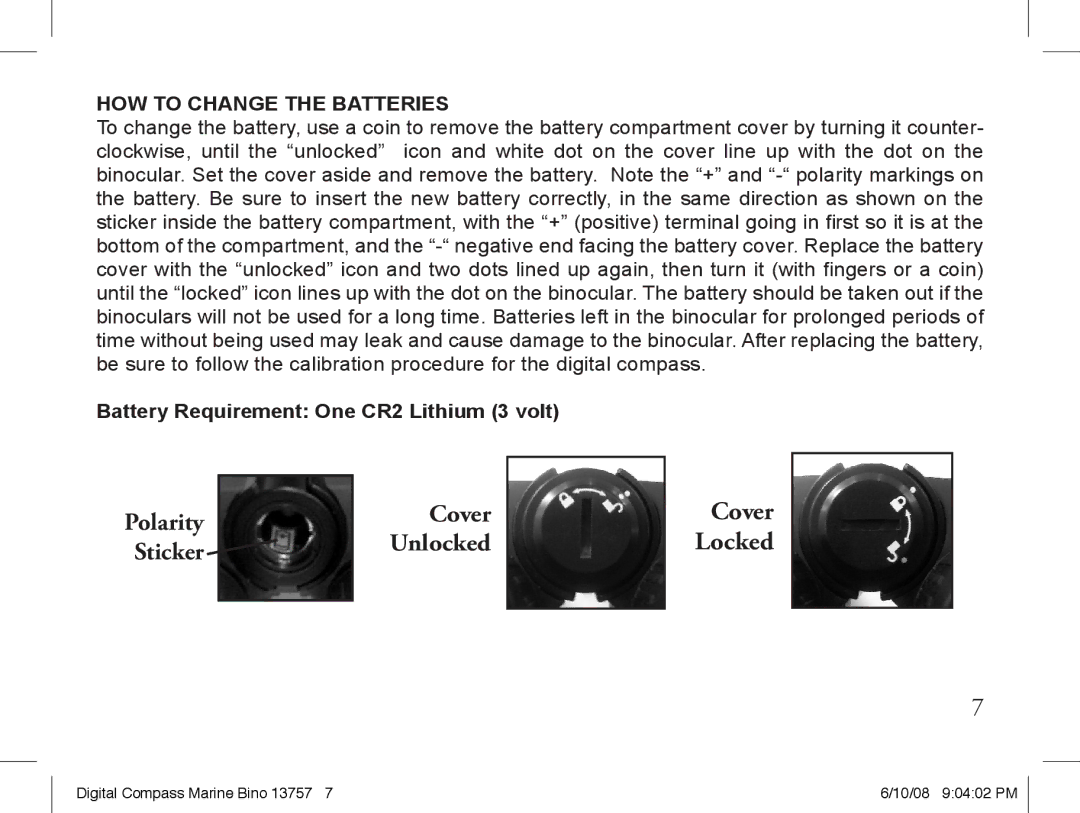13-7507 specifications
The Bushnell 13-7507 is a versatile and rugged spotting scope designed for outdoor enthusiasts, bird watchers, and hunters who prioritize clarity and precision in their observations. Known for its reliability and superior optical performance, this model from Bushnell caters to those who seek to enhance their viewing experiences in various settings.One of the standout features of the Bushnell 13-7507 is its powerful 20-60x magnification capability. This wide range allows users to zoom in on distant subjects with remarkable detail, making it ideal for spotting wildlife or observing far-off landscapes. The scope is equipped with a large 60mm objective lens that ensures maximum light transmission, which is crucial for maintaining brightness and color accuracy, especially during dawn or dusk when lighting conditions are less than optimal.
The design of the Bushnell 13-7507 incorporates fully multi-coated optics, which minimize light loss and provide crisp, clear images. This technology significantly reduces glare and enhances image quality, making it easier to identify subtle features in the field. Additionally, the scope offers a straight-barrel configuration, providing quick target acquisition and ease of use, a critical factor for those needing to act quickly.
Durability is a hallmark of the Bushnell 13-7507, as it features a robust, waterproof, and fog-proof construction. This ensures that the unit remains operational in adverse weather conditions, making it an excellent companion for outdoor adventures. The rubber armor coating provides an extra layer of protection against impacts and slips, further enhancing its ruggedness.
Ease of portability is another advantage, as the lightweight build of the scope allows it to be conveniently carried during long hikes or extended outdoor excursions. The built-in tripod mount allows for steady viewing over longer periods, especially beneficial when observing wildlife.
The Bushnell 13-7507 also includes a 45-degree angled eyepiece, which offers a comfortable viewing angle, reducing neck strain during prolonged observations. This ergonomic design further solidifies its status as an exceptional spotting scope.
In summary, the Bushnell 13-7507 stands out for its impressive magnification, excellent light transmission, durability, and user-friendly features, making it a highly sought-after tool for outdoor observation and exploration. Whether you are a wildlife enthusiast, a seasoned hunter, or simply an admirer of nature, this spotting scope is engineered to meet various observational needs.

